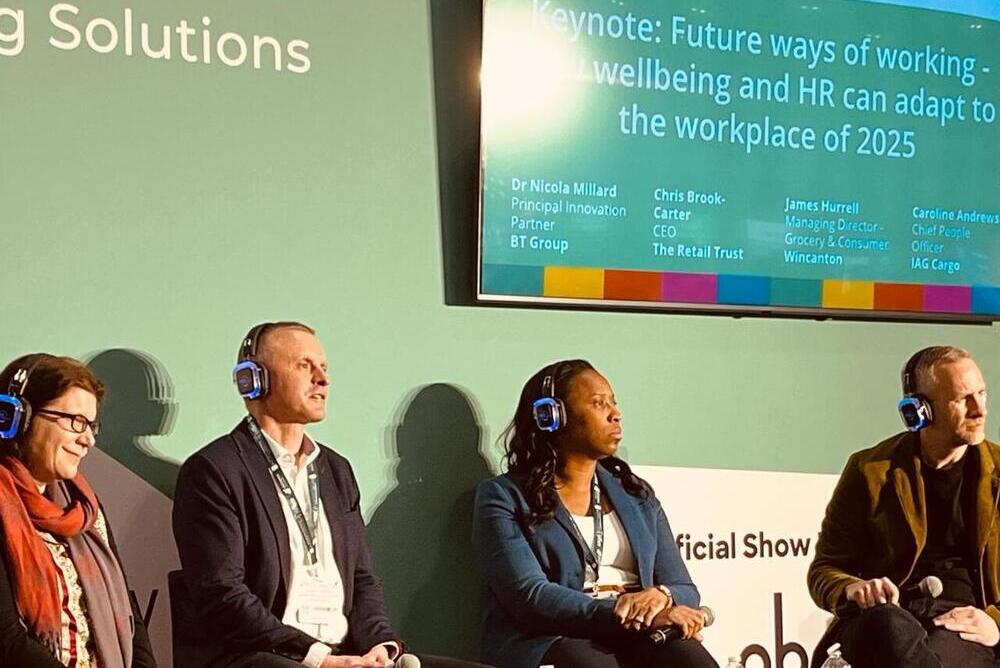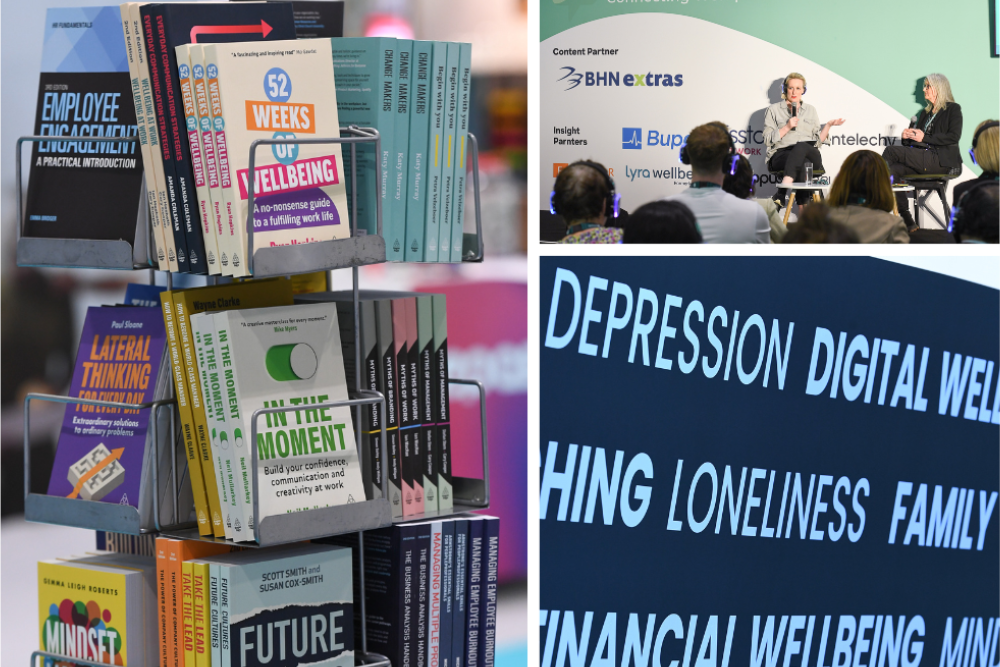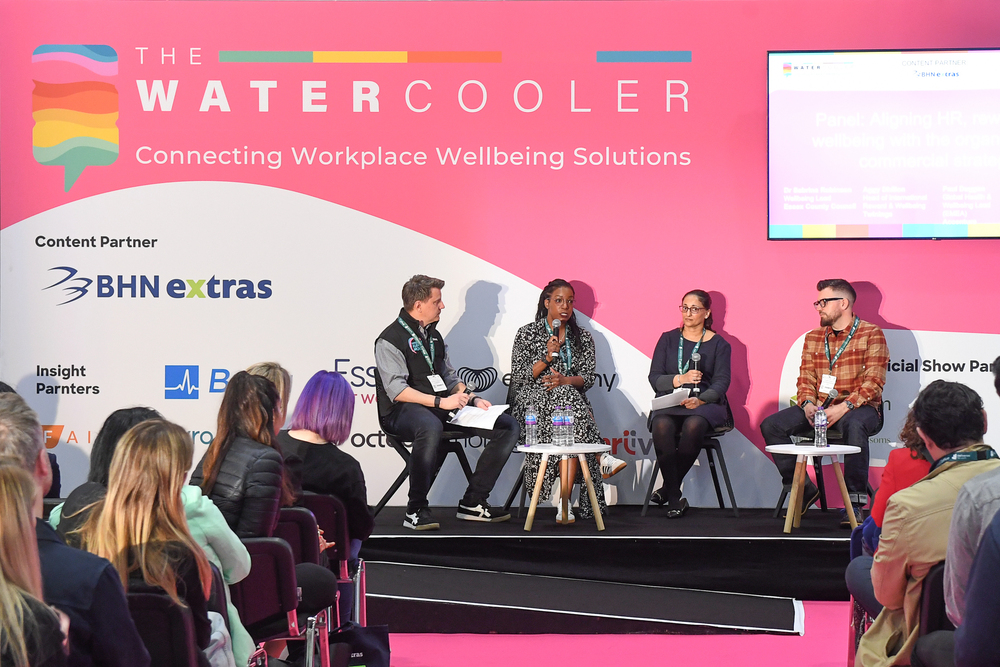In recent years, companies have faced growing calls to upgrade their wellbeing strategies to tackle the alarming rise in burnout and other mental health issues amongst employees.
As a result, the corporate wellness market had grown to a staggering $52bn in 2022 and shows no sign of slowing. But, despite this spending, the workplace wellbeing crisis rages on.
In February of this year, a report from the University of Oxford found no evidence that individualised wellness treatments (meditation, mindfulness and resilience training) improve employee wellbeing. While this study has prompted plenty of debate on both sides, it does raise some significant questions.
This is largely because, as research continues to emphasise, the key causes of poor employee wellbeing stem from work itself. Work overload, job insecurity, ambiguous roles, lack of work-life balance, and digital isolation are not just buzzwords, but tangible challenges impacting employees’ health.
The ramifications of this wellbeing crisis are profound, both in terms of the human costs and their financial implications.
For instance, Deloitte’s 2022 findings that showed 40% of turnover costs in the UK are linked to mental health issues are well documented. We can safely assume that this is increasing year on year post-pandemic.
This should be a wake-up call for companies of all sizes and cultures, proving that not caring can be considerably more expensive than caring.
We know we’re losing employees to wellbeing issues. We know the grim impact it’s having on individuals and the bottom line. We know we’ve spent a lot of money on things that aren’t working.
So, what should we do instead?
I’m glad you asked. A wellbeing strategy that actually works should be underpinned by 5 essential foundations:
1. Build meaningful relationships
Relationships are at the heart of any effective community, including the workplace.
But, as organisations grow, they tend to become more transactional in their approach to things like engagement and wellbeing. With the complexities of scale comes a deterioration in relationships.
This manifests in the way we communicate.
Outside of work, in our personal relationships, communication is a two-way process.
But the same can’t be said for many corporates. The company communicates in a series of formal memos and periodically invites its employees to give feedback. That feedback is usually restricted to a series of carefully curated questions and their responses – AKA, employee engagement surveys.
There isn’t a meaningful relationship in our personal lives that we would approach like this.
The result is obvious: people feel insignificant and uncared for, and leadership requests feel increasingly one-way and burdensome.
Another unintended consequence of under-investing in relationships is that employees feel their organisation’s wellbeing efforts are insincere. This not only reduces the efficacy of the approaches, but further undermines trust and engagement.
So, the challenge here is to shift from sporadic surveys and one-way communication to continuous, open dialogue. By engaging everyone in two-way conversation, you foster collective sensemaking and strengthen alignment towards a shared purpose.
The first foundation of your wellbeing strategy: Ongoing dialogue, particularly between senior executives and the body of your organisation, is key to forging stronger relationships with employees.
2. Foster a culture of care
In his book Trust Factor, Paul Zak shares a statistic everyone should know: “Caring explains 84% of organisational trust”.
For care to be meaningful and effective, it must be embedded into the fabric of organisational culture; in other words, it must be part and parcel of the way you do things.
Culture is fluid and dynamic, so it’s not as straightforward as telling people you value care. It means creating the conditions where caring for one another is at the forefront of people’s minds and embedded in ways of working and communicating.
Start by ensuring your wellbeing support mechanisms are psychologically safe and accessible to all.
All too often, people keep quiet about their struggles until they’re in crisis. There are manifold reasons for this, including real or perceived fears around the consequences of admitting mental illness or burnout.
The crucial thing to understand about workplace wellbeing? It’s most effective when it’s a community effort.
Since the biggest driver of work-related stress and burnout is work itself, any robust wellbeing programme must actively promote and enable peer-to-peer support.
After all, it’s the interactions we have with our colleagues every day that shape our working lives, and we’ve seen first-hand the impact of peer support in preventing wellbeing spirals.
The second foundation of your wellbeing strategy: We can’t support people if we don’t know who needs support, but we can establish a culture whereby – at the first sign of someone struggling – we lead with a care-first approach.
3. Move from reactive to proactive support
To really get to grips with employee wellbeing, organisations must transition from a reactive to a proactive approach.
Often, organisations only learn of an employee in crisis when they’ve already been signed off work or they’re leaving the business to focus on their wellbeing. That’s why a lot of wellbeing offerings can be summed up as, ‘too little, too late.’
Why is this? Wellbeing programmes often focus on mitigating the impact of individual crises; fix the employee, then put them back in the environment that caused the initial problem.
Instead, organisations need to adopt an approach that anticipates wellbeing issues and enables timely intervention.
At the heart of this change is recognising that we need to listen better. The things people could (and would) tell us, given the appropriate tools and conditions, would help leadership identify problems long before they start harming people.
We’ve seen first-hand how anonymised dialogue encourages people to share their struggles before they reach crisis point, allowing the organisation to offer them preventative – rather than restorative – support.
As with relationship building, an over-reliance on periodic surveys for employee listening is harming organisations’ ability to get on the front foot with wellbeing.
The third foundation of your wellbeing strategy: Empower proactive, not reactive, support by making wellbeing support anonymous and accessible to all.
4. Champion inclusion
I’ve made the case for proactive support and early detection, but none of that is possible if your people are reluctant to speak up.
Many employees will not feel comfortable voicing personal struggles, and encouraging them to do so takes more than an open-door policy.
Again, anonymous dialogue is crucial for enabling constructive conversation about wellbeing.
For many companies, the question of anonymity is caught up in cultural totems and aspirational values: “We want to be a frank and honest workplace where people can speak freely.”
But this underplays the real value of anonymity: inclusion.
Anonymity makes it okay for people to share how they feel. It equalises voice and all but eliminates bias. When we approach conversations without profiles, avatars or identifiers of any kind, we focus on what’s being said – not who said it.
The right technology gives people the opportunity to voice their experiences when it suits them, rather than when it suits the organisation. When companies provide safety in anonymity, they start hearing more of what really matters to their people – all of their people.
The fourth foundation of your wellbeing strategy: Foster inclusion by providing safe, anonymous channels for wellbeing support.
5. Improve the accuracy of your data
It should be clear by now that periodic insights are no longer sufficient to tackle the current state of workplace wellbeing.
Few areas things impact organisational success as much as the health and morale of our people, so shouldn’t we apply the same rigour of measurement and reporting as we would other business objectives?
From everything we now know about burnout and how it manifests itself, we can confidently conclude that no survey will be able to pick out an individual in distress. That’s not what surveys were designed for.
So, companies need to be looking at their data sources more broadly and thinking about where they can glean insight into the impact of work on their people.
Workplace-related ill-health like burnout and prolonged stress are rarely one-off, isolated events. It’s far more often the ‘pebble in the shoe’ effect that finally wears us down.
That’s what we need data to show us. That’s how you spot the people who need help right now.
The most robust wellbeing strategies pair live data with ongoing dialogue to gain an accurate understanding of both the state of wellbeing in your organisation and – crucially – the factors influencing it.
It’s these invaluable insights that must drive your organisation’s framework for action rather than assumptions.
The fifth and final foundation of your wellbeing strategy: Harness a data-driven approach that empowers timely, targeted and empathetic intervention.
Unlock wellbeing with live employee listening
I’ve covered a lot of ground in this article; from building stronger relationships to leading with data-driven insights. But, really, all five foundations have one thing at their core: employee listening.
One of the simplest ways to start making meaningful progress with employee wellbeing is to stop treating your wellbeing strategy as distinct from your listening strategy.
The two are completely intertwined and co-dependent. When you transition from periodic insights to live, and continuous listening (which must include dialogue, by the way), you’ll hear more of what matters to your people and can respond in a more targeted and timely manner.
The future of employee wellbeing starts with better listening.
About the author:
With 25 years of experience in management consulting, leadership advice and strategy, David Bellamy has a deep understanding of the human aspects of work and the challenges that leaders face in creating a positive environment.
David is Founder & CEO of Harkn, the employee voice tool that’s leading the age of the listening organisation. The team is on a mission to create safe, inclusive workplaces where both the business and its people thrive.
Harkn’s live sentiment analysis and anonymous dialogue capabilities help businesses to maintain a healthy, innovative and productive workforce. After all, no strategy, change initiative, or acquisition can succeed without a motivated and engaged workforce.
You might also like:















